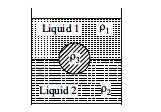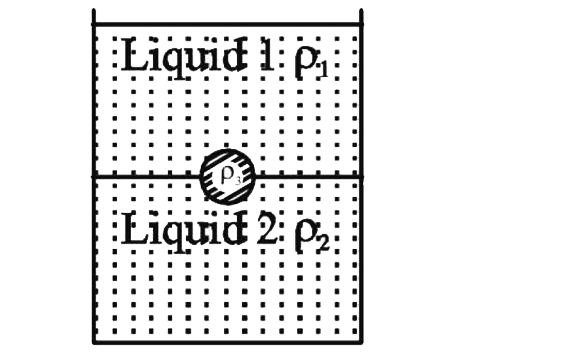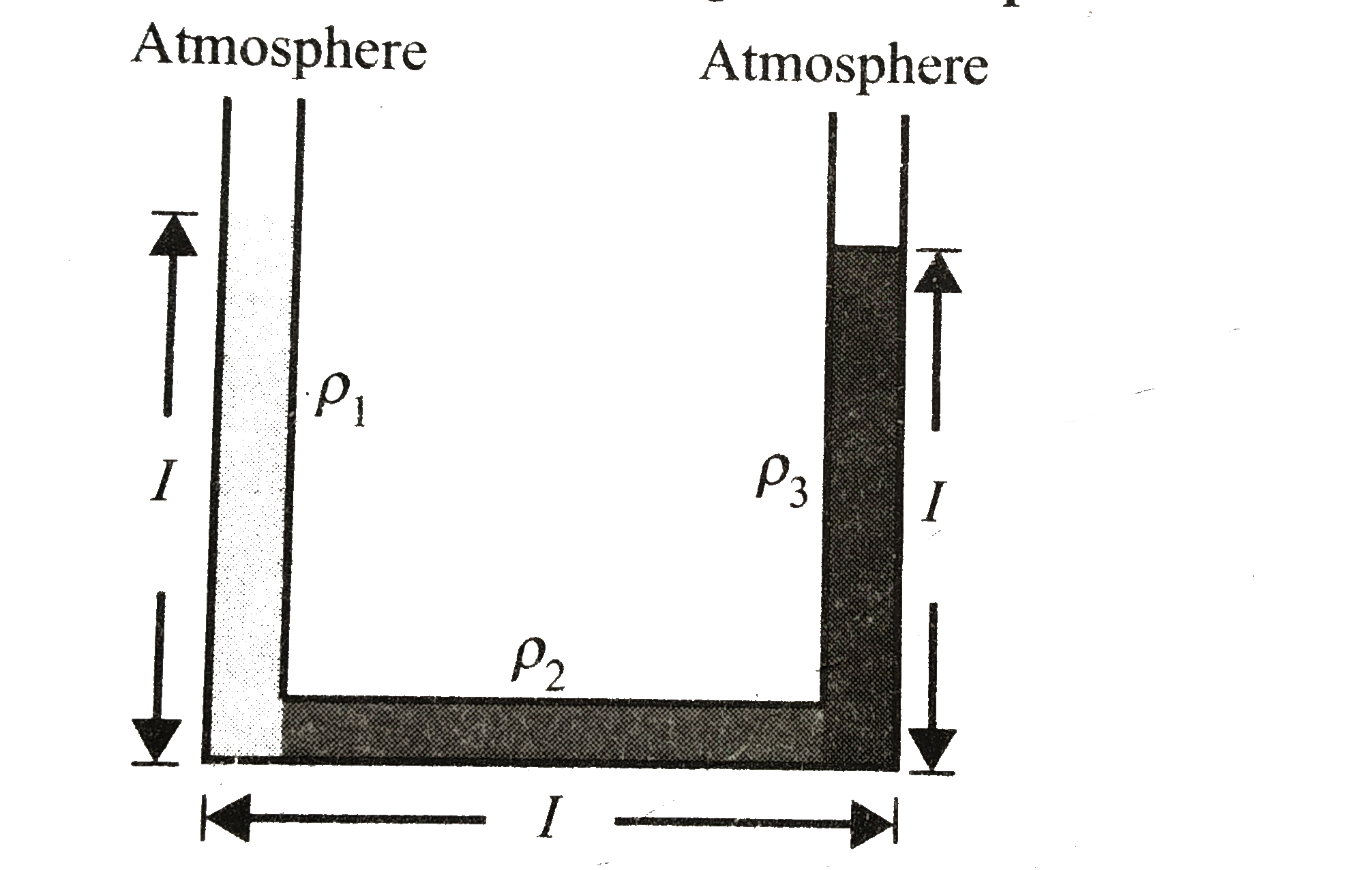
A jar filled with two non-mixing liquid 1 and 2 having densities ρ1 and ρ2 respectively. A solid ball, made of a material of density ρ3 is dropped in the jar. It come to equilibrium in the position shown in the figure. Which of the following is true for ρ1,ρ2 and ρ3?
ρ3<ρ1<ρ2
ρ1>ρ3>ρ2
ρ1>ρ2>ρ3
ρ1<ρ3<ρ2
The correct Answer is:D
ρ1<ρ2 as denser liquid acquires lowest position of vessel.
ρ3>ρ1 as ball sink in liquid 1 and ρ3<ρ2 as ball doesn't sinks in liquid 2 so ρ1<ρ3<ρ2
Topper's Solved these Questions
Similar Questions
Knowledge Check
A jar is filled with two non-mixing liquids 1 and 2 having densities ρ1 and ρ2 respectively. A solid ball, made of a material of density ρ3, is dropped in the jar. It comes to equilibrium in the position shown in the figure. Which of the following is true for ρ1,ρ2 and ρ3 ?
 Aρ1<ρ3<ρ2Bρ3<ρ1<ρ2Cρ1>ρ3>ρ2Dρ1<ρ2<ρ3
Aρ1<ρ3<ρ2Bρ3<ρ1<ρ2Cρ1>ρ3>ρ2Dρ1<ρ2<ρ3A jar is filled with two non-mixing liquids 1 and 2 haivng densities ρ1 and ρ2 respectively. A solid ball, made of a material of density ρ3 , is dropped in the jar. It comes to equilibrium in the position shown in the figure. Which of the following is true for ρ1, ρ1 and ρ3?
 A(a) ρ3<ρ1<ρ2B(b) ρ1>ρ3>ρ2C(c) ρ1<ρ2<ρ3D(d) ρ1<ρ3<ρ2
A(a) ρ3<ρ1<ρ2B(b) ρ1>ρ3>ρ2C(c) ρ1<ρ2<ρ3D(d) ρ1<ρ3<ρ2If two liquids of same masses but densities ρ1andρ2 respectively are mixed, then the density of mixture is given by
Aρ=ρ1+ρ22Bρ=ρ1+ρ22ρ1ρ2Cρ=2ρ1ρ2ρ1+ρ2Dρ=ρ1ρ2ρ1+ρ2
Two planets have radii r1and2r1 and densities are ρ1and4ρ1 respectively. The ratio of their acceleration due to gravities is
View SolutionIf two liquids of same volume but different densities ρ1andρ2 are mixed, then density of mixture is given by
View SolutionIf two liquids of same volume but different densities ρ1andρ2 are mixed, then density of mixture is given by
View SolutionTwo substances of densities ρ1 and ρ2 are mixed in equal volume and the relative density of mixture is 4. When they are mixed in equal masses, the relative density of the mixture is 3. the values of ρ1 and ρ2 are:
View SolutionThree liquids having densities ρ1,ρ2,ρ3 are filled in a U-tube. Length of each liquid column is equal to I, ρ1>ρ2>ρ3 and liquids remain at rest (relative to the tube) in the position shown in the figure. It is possible that

View Solution
